If you have been paying attention, you know that I prefer low-power variable optics for the general use AR-15 …
That’s because they offer you a TON of options — basically turning your humble AR-15 carbine into the closest you can get to a “do-it-all” AR-15 carbine/rifle.
And today, thanks to good ole American ingenuity and the influence of shooting sports like 3-Gun … plus the success of variable optics (and magnified optics in general) in the GWOT … we’re seeing more variable optics than ever before … at lower prices than ever before.
Why Variable, Low-Power Optics Kick Butt!
I’ve talked about this before in How To Have One AR-15 For Everything From 0-600yds …
Basically, having a 1-6x or 1-8x variable optic means that you can use the 1x setting with a good reticle for up-close work like a red dot (and it’s just as fast). And if you want to make any long range shots from 100-600yds — or heck even more — you just dial up the magnification to the top end (either 6-8x in most cases).
And you saw proof of the concept for combat in How Special Operations Soldiers Setup Their AR-15’s …
1-4x Variable Scopes VS 1-6x Variable Optics
For the past few years the 1-4x variables were the most common for the AR-15.
And you can still find many great examples of these scopes and they are much, much cheaper nowadays than ever before.
That’s because technology has moved on and the new “minimum” it seems is the 1-6x in most cases …
In part 3 of the linked article the author explains that the 3-Gun world has pushed the envelope to make 1-6x variables the new “standard”:
“Why would one need a more powerful optic with a 14.5″ (14.5-inch)-barreled 5.56 when most consider it to be a 500 meter gun? To help answer this question, I think it’s best to relate an experience I had while shooting the FNH 3-Gun match one year. At the time, I was using a Vortex 1-4-power scope on my AR. Now, I consider myself pretty well trained on a 4-power scope using both one at work (Elcan) and another in competition (at the time Vortex) as my primary optic. I felt pretty good as far as being able to do well in the match.
During the courses of fire, there were two stages where shooters had to hit 6″ (6-inch) and 8″ (8-inch) plates from 200 out to 300 meters or so. During those stages, while I was able to hit those plates with my 4-power pretty fast, and went almost one for one on every shot, as it turned out, I was outpaced by a lot of other competitors.
What had led me to getting beaten? Well, 1-6-power scopes had just hit the scene, and even though I had done well, I was outpaced by the shooters with more powerful optics. It’s that simple. The fact is, with more optical power, it’s easier to get on target faster, especially on small targets. Breaking down the match, shooting eight 6″ plates at 200 meters, I probably averaged four seconds from breaking the shot to shooting the next target with another clean hit. The shooters with 6-power scopes were easily cutting a second off their transitions to the next target. That equaled less time overall to shoot all eight plates.
Well, 3-Gun is a game. How does that translate to tactical shooting? Easy. Look at a target at 400 meters with a 1-4-power Elcan. You can put the crosshair in the middle of the chest. Now look at that same target with a 6-power scope. Thanks to the extra magnification, you can put your crosshair on an exact spot on the chest or on the head much more assuredly. So, while I feel the 1-4 Elcan is a great combat proven optic it’s time to move on, for this reason alone. 7.62 rifles like the SCAR-Heavy come issued with 1-6-power Elcans with 7.62 BDC’s (Bullet Drop Compensating). I think it is time for the same thing for 5.56 guns.”
Now that we’ve set the stage, let’s continue this review of …
The 3 BEST 1-6x Variable Optics For $400 or Less!
Thank God for technology and the free market system that can provide us with such inexpensive options for rifle scopes that are actually truly great!
No longer do you have to choose between “Wal-Mart Cheap” and “Scope you can actually trust, but have to take out a second mortgage to afford”!
All three of these scopes, being under the $400 mark, should be quite affordable by most everyone who is serious about getting a good scope.
Seriously guys, at under $400 — for most of these scopes — you could set aside just $1 per day and be able to buy one by this time next year.
That’s pretty darn cheap for the quality you’re about to see. And the most BUDGET option on this list is even under $300!
So let’s get to it …
The Primary Arms 1-6 x 24mm Scope with Patented ACSS 5.56 / 5.45 / .308 Reticle-PAPS1-6X
COST: $269.99
WEIGHT: 17.4 Oz
RETICLE: ACSS BDC (Bullet Drop Compensator) Reticle
This is the CHEAPEST you can find a “good” 1-6x optic for, by far!
Under $300 (at the time of this publishing) is quite amazing when you think about it.
Primary Arms is a company that is based in Texas that has a reputation for designing really nice scopes for a really low price. That’s their basic reputation. They are only slightly more expensive than some piece-of-crap that will break (or lose zero) the first time you put it on your rifle from Wal-Mart, yet they are much more durable.
If you are on a budget, and you need the cheapest 1-6x scope possible, this is a good choice. YouTube reviewer SuperSetCA does a good job demonstrating the “highlights” of this scope here:
The Reticle:
Primary Arms is known for developing their own reticles too. The “Advanced Combined Sighting System” (ACSS) BDC reticle on this scope is pretty neat. By the way, the PrimaryArms website has the full users manual that explains it available and a brochure ships with the scope.
You use the big “horse shoe” looking reticle surrounding the red dot for up close work (on 1x power) to shoot really fast. It’s illuminated so you can see it easier (but also etched into the glass if your batteries ever run out).
The vertical Bullet Drop Compensator (BDC) allows you to zero the center red dot at 100yds and then you can simply line up the various crosshairs for 100-800yard shooting for your chosen 5.56 bullet weight.
The two black dots to the left and right of the main, red reticle are for leading “running” targets. If your target is running from the left, simply put the black dot on it to “lead” far enough ahead of it and make the shot.
Finally the black vertical marks on the far right are for “auto ranging” allowing you to use it to quickly range how far away your target is if you’re at unknown distances.
It’s a pretty neat setup though lots of people find it to be too busy, it’s not bad at all to my eyes (though I’ve never taken it beyond 100 yards). As noted in the SuperSetCA YouTube quick review above, the red illuminated reticle is not super “day light bright” if you’re shooting in really bright, sunny conditions. Your experience may vary.
In the video below, Primary Arms fully explains their reticle:
The Weight:
17.4oz is not bad for a scope in this 1-6x range, especially for the price! That means it’s just slightly over a pound.
Durability & Reliability:
I have this on one of my rifles, and I’ve never had a problem with it. That said, I’ve not beat on it. Primary Arms has their own torture test video of this optic here:
In general, the shooting community seems to really like Primary Arms scopes for durability at a low price. Primary Arms has this guarantee: “This tough scope is waterproof, fog resistant, and covered by a 3 year warranty.” So you get a 3-year warranty with it.
The Cost:
Again, at less than $300, you would be hard-pressed to find a better 1-6x scope for your AR-15! You can click here to buy it on Amazon for the best price. Actually, I think this is REALLY your ONLY choice for a scope of this quality and performance under $300. If you’re on a budget and you absolutely can NOT spend more than $300, then get this scope.
Vortex Strike Eagle 1-6 x 24 with AR-BDC reticle
COST: $325.87
WEIGHT: 17.6 Oz
RETICLE: AR-BDC reticle
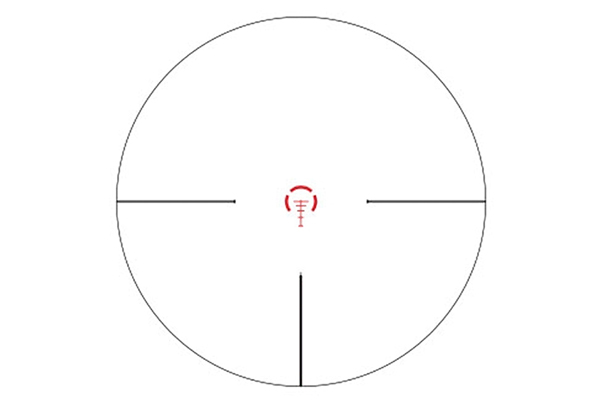 If you’re willing to pay just slightly more, you can invest in the Vortex Strike Eagle 1-6x scope. And I think this is a GOOD deal and here’s why.
If you’re willing to pay just slightly more, you can invest in the Vortex Strike Eagle 1-6x scope. And I think this is a GOOD deal and here’s why.
Vortex has made quite a name for itself in the last few years. In short, they are known for making affordable scopes that are not only good performers, but durable also and they have a LIFETIME Warranty. Vortex calls it their VIP WARRANTY and here’s what they promise:
“Our VIP warranty is about you, not us. It’s about taking care of you after the sale.
VIP stands for a Very Important Promise to you, our customer. We will repair or replace your Vortex product in the event it becomes damaged or defective—at no charge to you. If we cannot repair your product, we will replace it with a product in perfect working order of equal or better physical condition.
You see, it doesn’t matter how it happened, whose fault it was, or where you purchased it. You can count on the VIP Warranty for all Vortex Optics riflescopes, prism scopes, red dots, rangefinders, binoculars, spotting scopes, tripods, and monoculars.
* Unlimited Lifetime Warranty
* Fully transferable
* No warranty card to fill out
* No receipt needed to hang on to
If you ever have a problem, no matter the cause, we promise to take care of you.”
When you’re investing in a scope, Vortex has some “low price” ones and some high-er priced ones, but they’re generally nowhere near the high-end in price of proven combat optic brands like Leupold, Trijicon, Aimpoint, Nightforce, S&B, etc. But when you see a warranty like that, it really makes you feel better about the product you’re investing in.
And when it comes to scopes, Vortex is putting out stuff that works and that their customers like. The 1-6x Vortex Strike Eagle is an example of this (people were excited when it was announced a sub-$400 1-6x scope was being made by Vortex), but I also find it interesting that a survey of the top 50 shooters in the Precision Rifle Series (PRS) competition in 2015 had 40% of them running a Vortex brand scope!
As Tom Givens would say, “In Police work that’s what we would call a ‘clue’“. That says a lot I think about the popularity, quality, and performance of the Vortex line. But let’s talk about the Vortex Strike Eagle specifically. Practically Tactical does an in-depth review here on this scope:
The Reticle:
I really like the Vortex Strike Eagle reticle that they call the “AR-BDC reticle” and here’s why:
1. It is illuminated, like the other two scopes mentioned in this review, meaning at 1x power you can use it like a red dot scope for fast CQB type shooting
2. That illuminated reticle has a big horseshoe shape that’s super easy to pickup for fast shooting
3. You zero the center crosshair at 50 yards and the reticle does the bullet drop compensation for you all the way to 600yds for common 5.56 loads.
4. You can quickly estimate range by using the reticle patterns to measure 18″ objects. For example, the manual says “Distance will be approximately 200 yards when total width of first horizontal mark matches an 18” object or half width of line matches a 9” object.”
Overall, the reticle design is less “busy” which many people like but still allows you to have all your Bullet Drop Compensations (BDC) done for you, estimate ranges at unknown distances, and provides an ideal reticle for everything from 0 to 600yds of shooting with the AR platform.
Also, I LIKE that the center reticle is to be zero’d at 50yds because that actually makes it easier to zero at that range as compared to 100yds. And the center crosshair you zero is small enough to not obscure too much of the target at that distance. That’s one of my complaints as you’ll see about the Burris MTAC.
The Weight:
Vortex lists it at 17.6 ounces which is just over a pound, so it’s right there with the Primary Arms in weight. Just about right for a 1-6x scope in this price range.
Durability & Reliability:
I have this on one of my rifles, and I’ve never had a problem with it. That said, I’ve not beat on it. I’m not aware of any “torture tests” of this optic. That said, if you ever break this thing — Vortex will replace it with their warranty as already mentioned.
The Cost:
For less than $400, this is a bargain for sure.
And generally, this is less than $100 more than the Primary Arms scope. That means if you’re able to pay just a “little” bit more (only $56 more at the prices in this article) — you get a lifetime warranty. That’s worth it to me. You can click here to buy it on Amazon for the best price.
Burris MTAC 1.5-6x42mm Scope with Ballistic CQ reticle
COST: $384.60
WEIGHT: 15.5 Oz
RETICLE: Ballistic CQ reticle (and NEW for 2016: Ballistic AR Reticle)
I first heard about the Burris MTAC 1.5-6x scope from former Ranger and Special Forces soldier John Mosby, who now writes for us. He raved about it. It was affordable and it displayed all the benefits of the variable power scope that John likes. And he loved the durability of it (more on that in a moment).
He did such a good job “selling me” on it, that it was the first variable power scope I put on my AR-15. And it’s still there today. Here’s a pic of that rifle when I took it hog hunting:
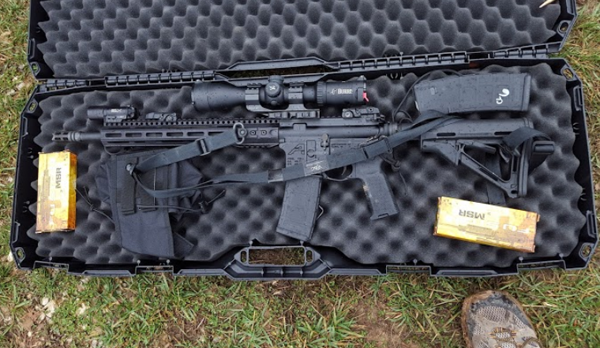
This is also the only scope on the list that’s a 42mm model instead of 24mm, meaning it’s a lot bigger than the other two. That means it should take in more light for you.
Also, this is the only scope on the list that’s not a “true” 1x power on the low end. In reality? I have not notice much of a difference at all in speed up close. I can still use it with both eyes open at CQB ranges.
It should also be mentioned, since I made such a big deal about the Vortex Warranty, that Burris scopes come with the “Burris Forever Warranty” which they explain like so:
“Every Burris optic is covered by the Burris Forever Warranty™. We will repair or replace your Burris optic if it is damaged or defective. The warranty is automatically transferred to future owners.
* No repair or replacement charge
* No warranty card needed
* No receipt needed
* No questions asked
The Burris Forever Warranty does not cover loss, theft, deliberate damage or cosmetic damage that does not hinder the performance of the product.”
Which, again, even at this price range which may or may not be a huge investment for you — it’s very nice to know that you’re going to get a quality product that the company stands behind … forever!
Also, while not about the MTAC 1.5-6x scope in particular, this video from Burris is pretty cool if you only think of Burris as a “hunting” scope company …
The Reticle:
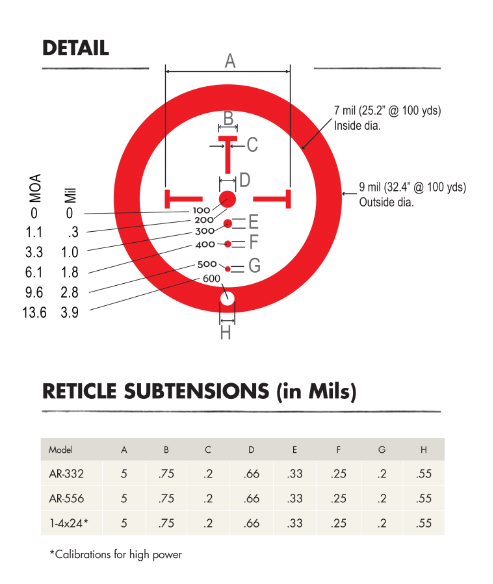 First, I ONLY have experience with the Ballistic CQ reticle from Burris because that’s what came with my scope. It appears that now, for 2016, they are also offering the Ballistic AR reticle with this scope which may push this scope up the list because one of the “issues” with this scope is the reticle.
First, I ONLY have experience with the Ballistic CQ reticle from Burris because that’s what came with my scope. It appears that now, for 2016, they are also offering the Ballistic AR reticle with this scope which may push this scope up the list because one of the “issues” with this scope is the reticle.
As Mosby explains: “Considering the cost, the Burris MTAC is, despite the one minor drawback (I absolutely despise the weird ass size of the center dot. Seriously, Burris, make me one with a 1MOA center dot, or a 2MOA at worst!), an extremely robust, well-made piece of optic.”
And that’s really the only “problem” with this scope’s reticle. Well, it’s a plus and minus really.
Because of the HUGE size of the outer red ring and the crosshairs it is extremely fast up close at 1.5x power. But, even at 100yds, trying to zero the center dot as you’re supposed to for the BDC to work properly — the dot is HUGE — and it covers up a lot of your target at 6x. So, while I haven’t shot it at 200, 300, 400yds or more I can only imagine that center dot is so big it covers up quite a bit of your target making precision nearly impossible.
And the BDC is designed for the center dot to be zero’d at 100yds. Just the size of the dot makes that hard. So for me, the Vortex reticle with a 50yd zero is easier to use (it’s also a much smaller aiming point).
That said, I’ve never had access to a range over 100yds anyways, so the MTAC reticle has always been great to shoot at distances from 0-100yds. So I don’t know if you can call it a downside, only that it’s something to be aware of.
ALL THAT SAID, it appears Burris has listened to somebody whining (maybe John?) and for 2016 released this scope with their Ballistic AR reticle. Here’s the pics of it …
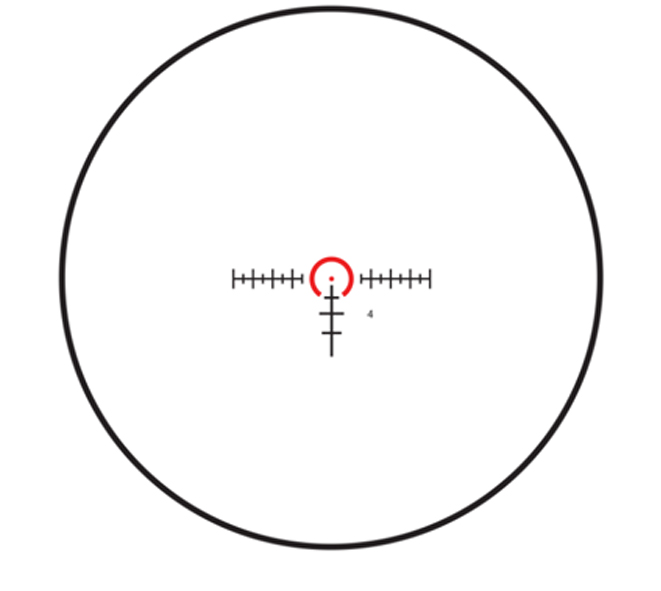 And judging by the explanation of the reticle by Burris it definitely eliminated the HUGE center dot and went with a sub-MOA (if I’m reading this correctly) center aiming point followed by the horseshoe shaped aiming point surrounding it for the fast work.
And judging by the explanation of the reticle by Burris it definitely eliminated the HUGE center dot and went with a sub-MOA (if I’m reading this correctly) center aiming point followed by the horseshoe shaped aiming point surrounding it for the fast work.
Great job Burris, it looks like you (may) have pleased the Mountain Guerrilla!
The Weight:
You know what’s funny? Until I started this review I REALLY thought the MTAC was the “pig” of the bunch and was the heaviest, but the Burris website has the weight listed at 15.5 oz which actually makes it about 2oz LIGHTER than the other two scopes. Which totally doesn’t make any sense to me because the other two are “smaller” with their 24mm lens diameter (even though all the 3 scope tubes here are 30mm size by the way). That’s light for a scope with this performance and specs. Whiskey, Tango, Foxtrot, Over?
You know what, as I think about it, it MAY be because I’m using the standard Burris P.E.P.R. quick-detach (QD) mount with the Burris MTAC and using lighter, different QD mounts with the other two scope setups. Damnit, now I’ll have to go look because that might be it. That said, if you don’t care much about weight, the Burris P.E.P.R. mount is very stout and works fine with the MTAC.
Durability & Reliability:
Burris not only backs their scopes with the forever warrenty, but they apparently build their scopes so tough that you probably will never have to use them. Again, I defer to the expertise of John Mosby on this because he has extensively “tested” the durability of the MTAC 1.5-6x optic (emphasis mine and cuss-words are John’s so if you’re offended by that type of talk … ummm … trigger warning?):
“So, those who have been in a rifle class specifically, but pretty much any class that involves the use of a rifle, can tell stories about how John Mosby abuses the shit out of his rifles. One of the demonstrations I do to illustrate a) the robustness of the Stoner platform, and b) the robustness of modern optics, is to hold my rifle out, at shoulder-height, and drop it, optics down, onto the ground, before standing on the rifle, while I finish an explanation. After four-plus years of doing that, I had—until very recently—never caused a single bit of damage to a rifle.
A couple years ago, in Arizona, I bent the rear bell on a Burris MTAC 1.5-6X, just enough that it made it difficult to adjust the magnification. Not impossible, or even close, just not as easy as it normally is. Despite the damage, the optic retained its zero, and when I removed it from my fighting rifle and put it on a hunting rifle, it zeroed to the new rifle easily. So, really, minimal damage, and for practical purposes, no damage.
A month or two ago, I finally managed to fuck a rifle up. In a vehicle class, back east, someone asked about “protecting” the rifle from banging off stuff when dismounting the vehicles. I was a little—should I phrase it….”overenthusiastic”–in my demonstration. Instead of just dropping the rifle, I chucked it—hard–about 40 feet across the meadow that was our training site. I had an AmTac Precision 15” free-float rail on the rifle. The rail ended up bent into a slight S-curve, was torqued a good 20+ degrees in twist, and the holes along the bottom of the rail were split out, and the rail section that held my Streamlight TLR-1HL weapon light came off. That is NOT, in any way, shape, or form, a denouncement of the rail system. For a couple reasons, as we’ll discuss in the next paragraph, the rail performed flawlessly, considering the abuse.
So, what happened to the optic? Well, the same thing that happened to the barrel: fuck all. When I got a chance to test-fire the weapon again, on a known-distance range, at home, it still shot sub-2MOA, and the POA/POI remained exactly the same as it was when I left for the class.”
So basically, if John can’t really break this optic when he’s — sort of — trying to? You probably won’t do it accidentally!
The Cost:
At $385’ish dollars it’s, again, slightly more expensive than the Vortex Strike Eagle. At under $400, this is still an extreme bargain. Click here to buy it on Amazon for the best price.
In Conclusion …
To wrap all this up …
These are ALL great optics for under $400.
I have purchased all three to run on different rifles to test out for this review.
That said, I don’t have ENOUGH time behind all three to make super smart and super detailed comparisons — and I’m REALLY not an expert in the different qualities of glass/clarity/etc that most scope experts can pontificate for hours about.
I’ve simply used all these optics by sticking them on my rifles, zero’d them, and ran some drills with them. In addition to quite a few reps of dry fire to see how I liked them. Hopefully I can take them all to a couple high-round-count classes to put them through their paces, but I haven’t been able to do that. Yet.
So here’s how I see it at this point …
If you absolutely can NOT afford to spend even $300 on an optic because of budget concerns, then the clear choice is the Primary Arms 1-6 optic. It’s the cheapest you can get for that type of performance. Considering the rave reviews online, the torture test vids, and more … you’re probably NOT going to do better for that price.
That said …
If you actually can afford at least $60 more dollars (give or take), the fact that you can get a lifetime warranty with Vortex makes me urge you to do that. Go with the Vortex Strike Eagle 1-6x if you are still on a budget but want a quality 1-6x scope with a lifetime warranty for quite a bit under $400.
Then there’s the Burris. They really threw me off by releasing that new reticle for 2016 on the MTAC 1.5-6x! That was really my only complaint (if you can even call it a “complaint”). That said, I haven’t used the new reticle so it may suck, who knows?
Also, Burris really surprised me with the stated weight of the MTAC. Maybe it’s because it “looks” bigger than the other scopes on my rifles — but I would of guessed it was absolutely heavier. I guess that’s not true though …
In short, I don’t think you can go wrong with the Burris either. If you simply can’t afford to spend that close to $400 then it may be a little out of your price range.
In total, ALL these scopes should be on your list to check out if you are looking for a 1-6x scope under $400 for your AR-15!
If you get a chance, probably the best thing you could do is visit a gun store that has them in stock and see which one you like the most with your eyes.
Also, if you are actually KNOWLEDGABLE about scopes — more than I am — or are into the long-range thing, then you might very quickly prefer one of these scopes over the others once you start trying it out because of things like MOA adjustments, how the knobs turn, glass clarity, etc — all of which could push one or the other further ahead for you.
The fact is, I’m not experienced enough to look through any of these scopes and say one glass is better than the other because they all look great to my untrained eyes!
I hope this review gives you something to think about if you’re in the market for a low-cost, low-power variable scope for your AR-15. If you have any experience with any of these scopes, please leave your comments below!



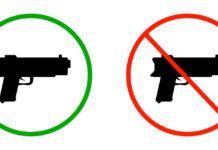



![Are Compensators Worth It? [Video]](https://preparedgunowners.com/wp-content/uploads/2025/07/Depositphotos_815431992_S-218x150.jpg)




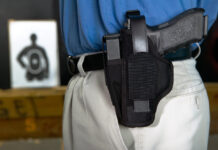
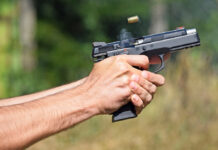
![Would-Be Robber Takes The Tueller Drill Challenge [Video]](https://preparedgunowners.com/wp-content/uploads/2025/10/Depositphotos_50626839_S-218x150.jpg)

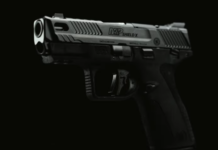
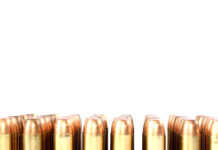
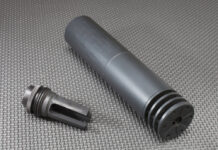
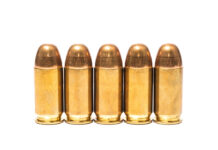
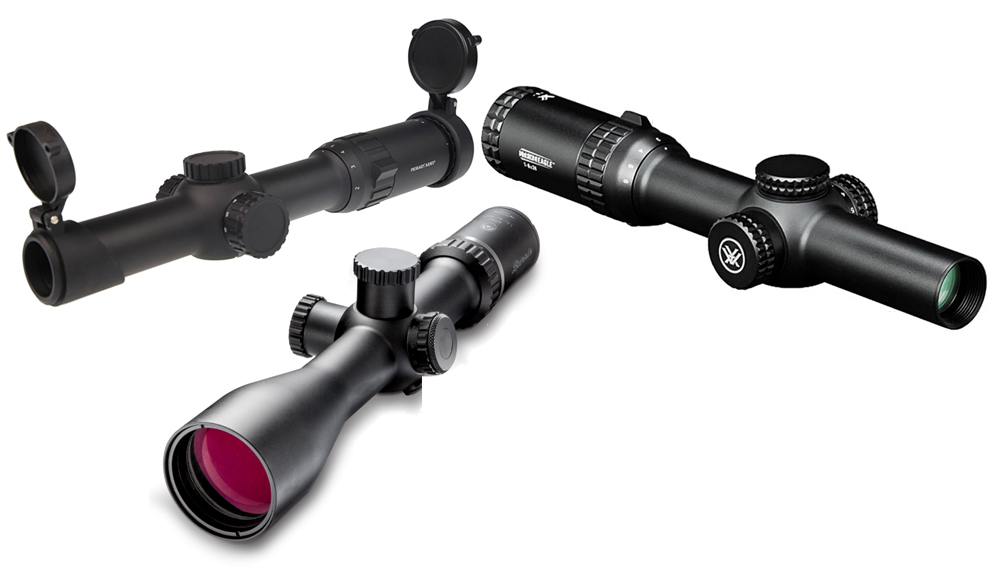
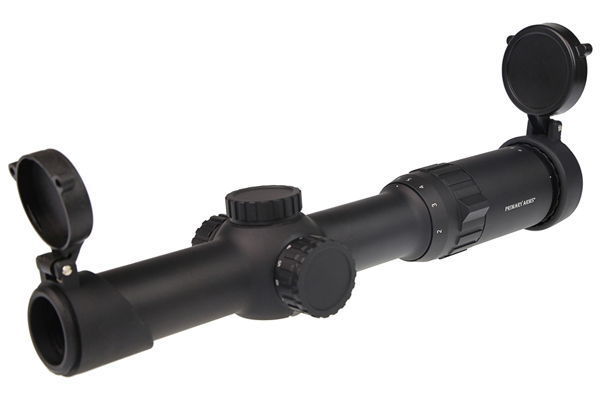
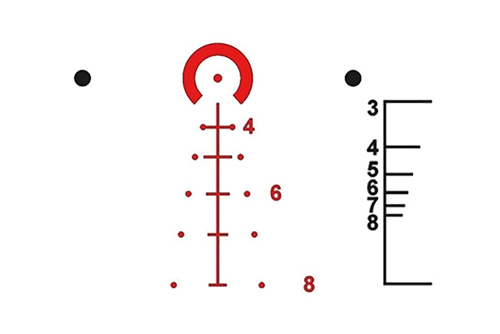
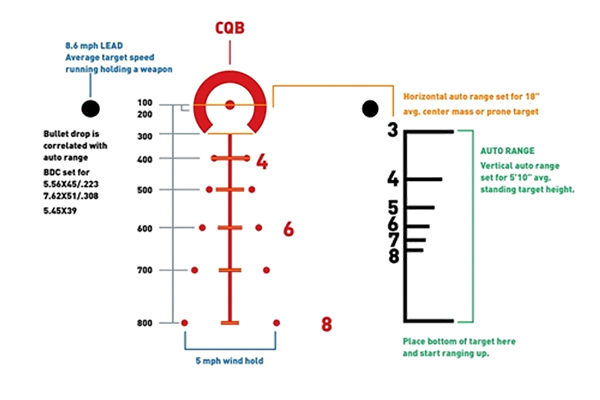
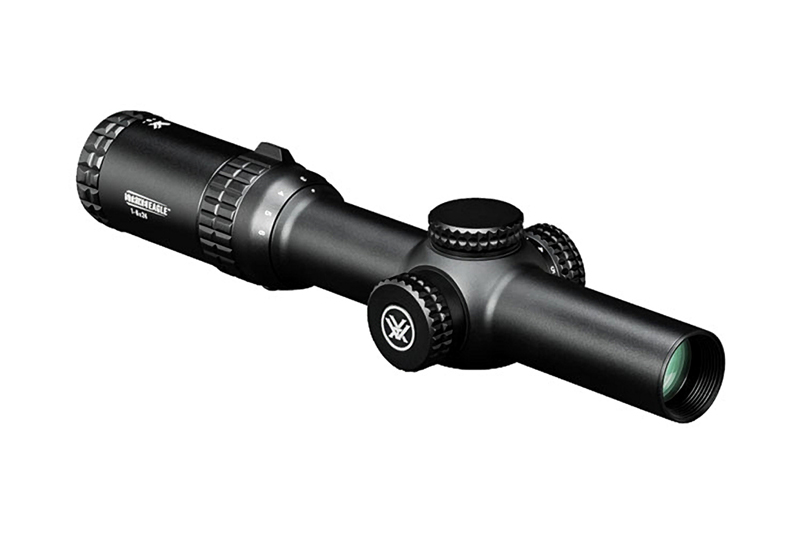

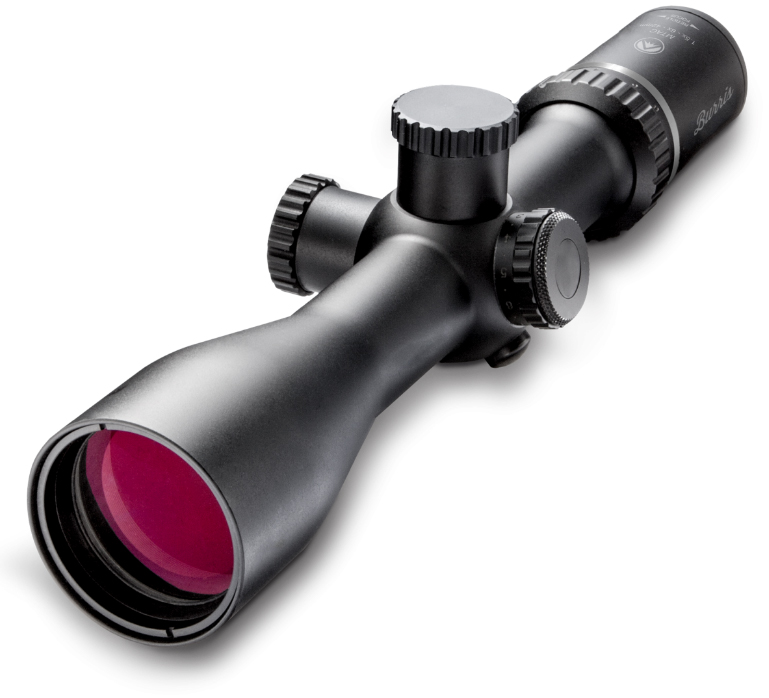

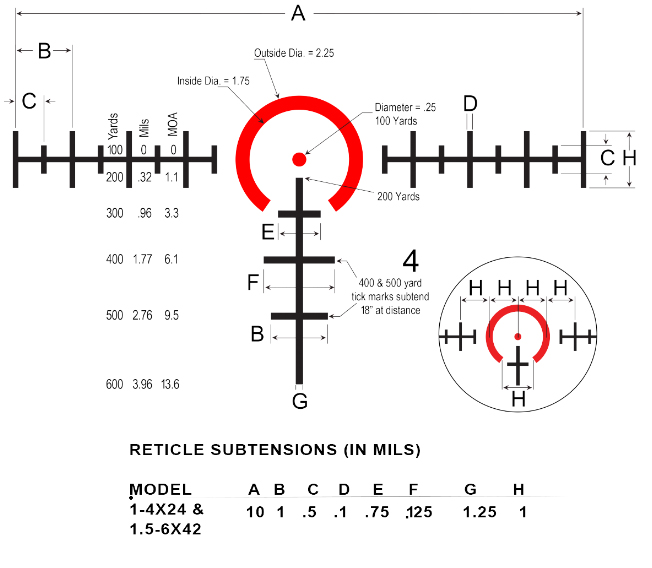



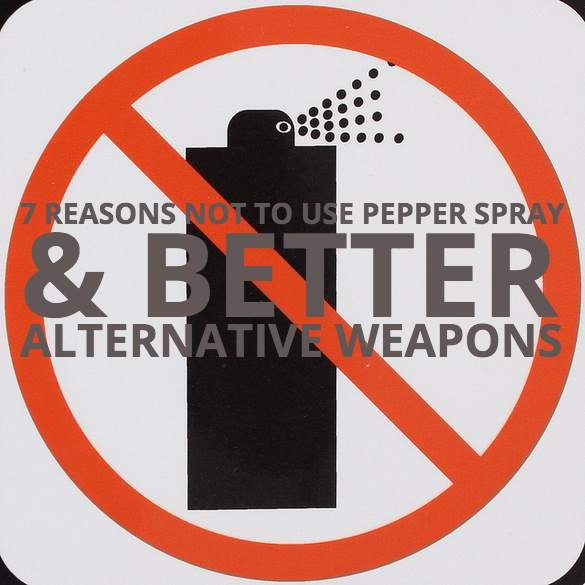






![Optic Ready vs Milled slides? [Video]](https://preparedgunowners.com/wp-content/uploads/2024/02/image-3-100x70.png)
![[Checklist] What Gear You Need To Take Pistol, Rifle & Shotgun Training Courses [Video]](https://preparedgunowners.com/wp-content/uploads/2023/07/Depositphotos_275087632_L-100x70.jpg)
![What is in Carter’s 2023 EDC? [Video]](https://preparedgunowners.com/wp-content/uploads/2023/07/Depositphotos_146856137_L-100x70.jpg)



Very interesting stuff. I have a related question…
I am looking for a similar optic (1-4x or 1-6x or …?), but not for an AR-15 (i.e. .223).
I would need it for a 9mm carbine or pistol-to-carbine-conversion kit (which are becoming apparently increasingly popular. Yes, I am aware that 9mm is more of a short-range (middle-range at the most) caliber but I want to get the most out of the possible range and push my ‘combat accuracy’ (You wrote an interesting article about that topic some time ago.) as far out as possible, even with ‘just’ a 9 mm.
Ideally I would like to shot (sufficiently) accurate up to 80-100m, although that is probably stretching the reliable accuracy of this caliber. I would appreciate any thougths or ideas you would have on this issue. Thanks.
I dont have experience with the submachine gun type platform, but I’m guessing a 1-4x would be MORE than enough … you’d be able to see lots of target details even at 100yds with 4x. That said, maybe find a buddy or range or somewhere you can look at 100yd targets with both 4x power and 6x power to determine what’s right for you?
The good news if 4x is enough for your uses — the scopes are (generally) lighter and cheaper.
Thanks for the response. Yes, 1-4x would certainly be enough. Thought so too. My concern/question is more in regards to the different recticles or ballistic calculations. Most of these scopes are designed for an AR-15 system (i.e. .223) and not 9mm which obviously has a rather different ballsitic curve.
The intention or my goal would be to go from 1x to 4x (and in between) on different distances and keep the recticle clean in the center of the curve (impact point) so I don’t have to guess if I maybe should aim a little bit higher (or lower) etc. etc. (As far as that’s realistically possible.)
Any thoughts?
I do NOT have any thoughts on that … other than.
Maybe just go with something basic, with no BDC (bullet drop reticle). Something with a dot on it so it’s still fast? Maybe like a leupold Pig Plex reticle?
https://www.leupold.com/hunting-shooting/scopes/hog-riflescopes/vx-hog-1-4x20mm/
That way there is no BDC tied to a specific load (like 5.56mm) but still offers many of the same benefits? And I think with a ballistic calculator and some range time you could figure out any hold offs that match up to the “marks” on the reticle. Sorry if that isn’t the right terminology, again I’m NOT a scope expert.
I THINK that USPSA or some of the other shooting sports just added pistol caliber carbines to their offerings? If that’s true then there should be more scopes that will start to suit your needs coming to market soon (and in the mean time you can ask around to see what they’re all using)
hope that helps!
Yes, thank you. It actually does. 🙂
Have a great weekend.
Read somewhere that the Primary Arms and Vortex is the same scope with the same glass made in the same factory. (Cosmetic differences on caps and power adjustment ring)
Got the Primary Arms because I preferred the ACSS reticle. Couldn’t see living with a reticle I did not prefer for the guarantee.
Video says glass distorts at edges “especially when you crank up the magnification”. NOT TRUE – at 1 power edges are distorted – crank up the magnification and it seems your view is more just the center of the glass and view is clear edge to edge.
Yea,was at the local gun store and had opportunity to look through a Trijicon VCOG – well – talk about SWEET CLEAR GLASS – CRISP CLARITY EDGE TO EDGE! Someday if I have $2400.00 I’m not doing anything with then yea maybe. (Read a review that said the VCOG reticle washes out in bright sunlight)
I’m happy with the Primary Arms 1-6 with ACSS reticle.
I have heard that too — but seem to have read it in passing or a comment somewhere no official source and I didn’t look into it much. I’m sure they’re both durable but only one company would send me a replacement if I break it in 10 yrs you know?
And I fear looking into the expensive scope glass because then maybe I WILL realize what I’m missing lol
[…] 3 Absolute BEST 1-6x Low Power Variable AR-15 Scopes For Under $400! […]
Good read! I recently purchased the Primary Arms. It now also comes with a lifetime warranty!
[…] 3 Absolute BEST 1-6x Low Power Variable AR-15 Scopes For … […]
[…] 3 Absolute BEST 1-6x Low Power Variable AR-15 Scopes For … […]
Comments are closed.